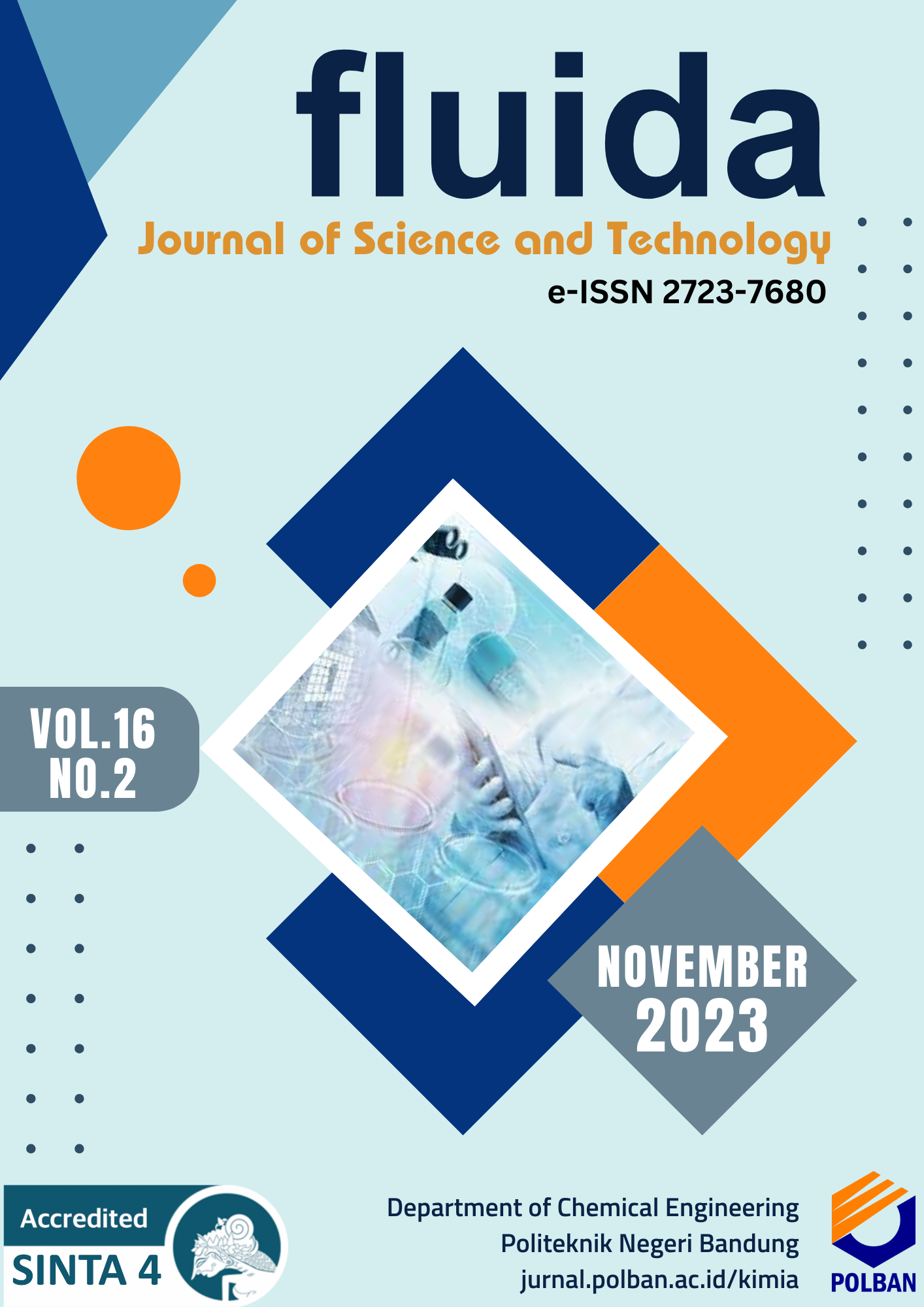The Effect of Antimicrobial Extract on The Characteristics of Tomatoes Coated by Edible Coating based on Tapioca Flour
Main Article Content
Abstract
The edible coating is a food coating material inhibitor of transpiration and respiration. Layer is not fully effective in preventing food spoilage. The spoilage process can occur more quickly if fruit with high moisture content has infected. The research aimed to determine optimum concentration of antimicrobial extract in maintaining shelf life and shrinkage of tomatoes, dominant bacteria in fruit spoilage, between Escherichia coli or staphylococcus. Figure out antimicrobial extracts that are effective in preventing microbial growth. Research begins with the extraction process, testing the active compounds in the extract, combining edible coatings and white turmeric and bitter melon extract with concentrations of 0%, 2.5%, 5%, 10%, 20%, 30%, and 100 respectively), tomato fruit coating. The tests included shelf life, weight loss, best antimicrobial extract, and inhibition diameter. The results more concentration of the extract made the shelf life longer to 14 days and reduced shrinkage by 3.53%. Secondary metabolite compounds in the form of saponins, steroids, and triterpenoids. The minimum concentration of 30% bitter melon and white turmeric extract to prevent bacterial activity and the diameter of the inhibition zone in the range of 10-12 mm showed the extract had the moderate ability. The more dominant bacteria in tomato fruit rot is Staphylococcus aureus.
Downloads
Article Details

This work is licensed under a Creative Commons Attribution-ShareAlike 4.0 International License.
An author who publishes in the FLUIDA journal agrees to the following terms:
- Author retains the copyright and grants the journal the right of first publication of the work simultaneously licensed under the Creative Commons Attribution-ShareAlike 4.0 License that allows others to share the work with an acknowledgement of the work's authorship and initial publication in this journal
- Author is able to enter into separate, additional contractual arrangements for the non-exclusive distribution of the journal's published version of the work (e.g., post it to an institutional repository or publish it in a book) with the acknowledgement of its initial publication in this journal.
- Author is permitted and encouraged to post his/her work online (e.g., in institutional repositories or on their website) prior to and during the submission process, as it can lead to productive exchanges, as well as earlier and greater citation of the published work (See The Effect of Open Access).
Read more about the Creative Commons Attribution-ShareAlike 4.0 Licence here: https://creativecommons.org/licenses/by-sa/4.0/.
References
[2] X. Ruelas-Chacon et al., “Guar gum as an edible coating for enhancing shelf-life and improving postharvest quality of roma tomato (Solanum lycopersicum L.),” J Food Qual, vol. 2017, 2017, doi: 10.1155/2017/8608304.
[3] “ppm-2013-buah bakteri”.
[4] R. Muin, D. Anggraini, and F. Malau, “KARAKTERISTIK FISIK DAN ANTIMIKROBA EDIBLE FILM DARI TEPUNG TAPIOKA DENGAN PENAMBAHAN GLISEROL DAN KUNYIT PUTIH,” 2017.
[5] N. Rahmawati, E. Sudjarwo, and E. Widodo, “Uji aktivitas antibakteri ekstrak herbal terhadap bakteri Escherichia coli”, [Online]. Available: http://jiip.ub.ac.id/
[6] “UJI AKTIVITAS ANTIBAKTERI EKSTRAK ETANOL RIMPANG KUNYIT.”
[7] “GAMBARAN EFEKTIVITAS EKSTRAK BUAH PARE (Momordica charantia L) SEBAGAI ANTIBAKTERI TERHADAP Escherichia coli KARYA TULIS ILMIAH Oleh BELLA APRILIA MONICK NIM. 1172036 PROGRAM STUDI DIII TEKNOLOGI LABORATORIUM MEDIS SEKOLAH TINGGI ILMU KESEHATAN NASIONAL SURAKARTA 2020.”
[8] U. Sumatera Utara, “UJI AKTIVITAS ANTIBAKTERI EKSTRAK METANOL, ETIL ASETAT, DAN n-HEKSANA DARI DAUN BENALU ALPUKAT (Dendrophthoe pentandra (L.)oMiq.) SKRIPSI Diajukan Untuk Melengkapi Tugas Dan Memenuhi Syarat Mencapai Gelar Sarjana Sains PUTRA ANGGA WINARTA GINTING 150822042 DEPARTEMEN KIMIA FAKULTAS MATEMATIKA DAN ILMU PENGETAHUAN ALAM UNIVERSITAS SUMATERA UTARA MEDAN 2018.”
[9] “pengaruh ekstrak etanol pada buah pare”.
[10] J. Kimia Fakultas Sains Dan, “UJI EFEKTIFITAS EKSTRAK KASAR SENYAWA ANTIBAKTERI PADA BUAH BELIMBING WULUH (Averrhoa bilimbi L.),” 2008.
[11] “EVALUASI SIFAT ANTIBAKTERI EKSTRAK MICROWAVE-ASSISTED.”
[12] P. Treenate, P. Monvisade, and M. Yamaguchi, “The Effect of Glycerol/Water and Sorbitol/Water on the Plasticization of Hydroxyethylacryl Chitosan/Sodium Alginate Films”, doi: 10.1051/C.
[13] H. Hasim, Y. Y. Arifin, D. Andrianto, and D. N. Faridah, “Ekstrak Etanol Daun Belimbing Wuluh (Averrhoa bilimbi) sebagai Antioksidan dan Antiinflamasi,” Jurnal Aplikasi Teknologi Pangan, vol. 8, no. 3, p. 86, Aug. 2019, doi: 10.17728/jatp.4201.
[14] I. Wati, M. Si, M. Ramadianti, and M. Ir, “Pengaruh Konsentrasi Pelarut dan Nisbah Bahan Baku dengan Pelarut Terhadap Ekstraksi Kunyit Putih (Curcuma zedoria.).”
[15] A. Dwi Aristyawan and N. Erma Sugijanto, “Potensi Antibakteri dari Ekstrak Etanol Spons Agelas cavernosa,” Jurnal Farmasi Dan Ilmu Kefarmasian Indonesia, vol. 4, no. 1, p. 39, 2017.

